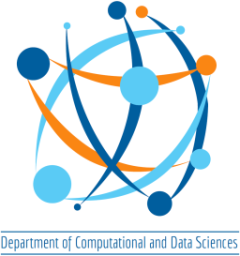DEPARTMENT OF COMPUTATIONAL AND DATA SCIENCES
Ph.D. Thesis Colloquium
Speaker: Mr. M B RAJ
S.R. Number: 06-18-01-10-12-20-1-18486
Title: “ChemXDyn: Dynamics-aware methodology for chemically accurate species identification and kinetic analysis from atomistic simulations”
Research Supervisor: Dr. Konduri Aditya, Dr. Phani Motamarri
Date & Time : November 28, 2025 (Friday), 12:00 Noon
Venue : #102, CDS Seminar Hall
ABSTRACT
Accurate prediction of ignition, flame propagation, pollutant formation, and soot inception in advanced combustion systems relies on chemical kinetic (CK) models whose reliability is limited by gaps in experimental data and the complexity of multiscale reactive processes. Reactive molecular dynamics (RMD) simulations offer a powerful bottom-up route to uncover atomistic reaction pathways, but their impact has been constrained by the lack of robust methods for extracting chemically meaningful species and reactions from noisy, high-temperature trajectories.
This thesis develops ChemXDyn, a dynamics-aware framework that integrates temporal interatomic distance analysis, and valence/coordination consistency to reliably detect bond formation, dissociation, and molecular connectivity in both classical and machine-learned potential–based molecular dynamics. ChemXDyn overcomes long-standing limitations of frame-by-frame thresholding methods such as ChemTraYzer and ReacNetGenerator, which frequently misinterpret vibrational fluctuations, transient encounters, and π–π stacking as chemical events.
ChemXDyn is validated comprehensively across three major combustion systems:
- Hydrogen oxidation: ChemXDyn provides noise-free, chemically consistent species profiles and accurately identifies true reaction occurrences, enabling reliable extraction of rate constants. These ChemXDyn-derived parameters correct key reactions in the Li et al. mechanism and reproduce ignition delays and laminar flame speeds across multiple temperatures, significantly outperforming existing MD analyzers.
- Ammonia oxidation: The method captures critical NOx-forming and consuming pathways with high chemical fidelity under different thermochemical and mixing conditions.
- Methane oxidation using machine-learned potentials: ChemXDyn reconstructs the canonical CH₄ → CO₂ oxidation sequence, demonstrating seamless applicability to neural-network MD and ab initio–level potentials.
The thesis further extends ChemXDyn to soot-forming ethylene oxidation, where it distinguishes covalent bonding from π-stacking, enabling accurate identification of early aromatic nucleation pathways. Additionally, ChemXDyn is applied to vibrational nonequilibrium H₂–O₂ systems, revealing how mode-specific excitation reshapes radical chemistry and dramatically accelerates ignition.
Overall, this work establishes ChemXDyn as a general, scalable, and chemically rigorous tool for extracting species, reactions, and rate parameters from atomistic simulations. By bridging molecular dynamics with continuum-scale kinetic modelling, the thesis advances a unified framework for understanding combustion, pollutant formation, nonequilibrium chemistry, and emerging clean-fuel technologies.
ALL ARE WELCOME



